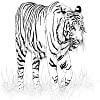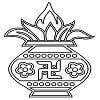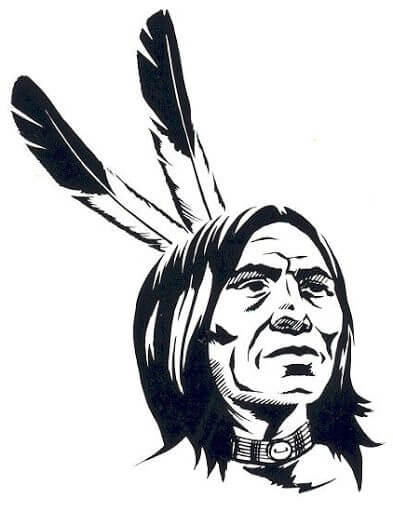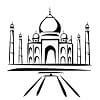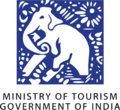- Home
- Holiday Ideas
-
-
- Choose Your Traveling Theme
-
- Adventure Tourism
-
- Cultural Tourism
-
- Tour Packages
-
-
- Packages by State
-
- Holidays by Interest
-
- Popular Tour Packages
-
- Fair And Festivals
-
- Ayurveda And Yoga
-
- Offers
-
- Destinations
-
Kumbh Mela
Kumbh Mela
The name Kumbh Mela originates from Hindi, and more often within the original Sanskrit and other Indian languages, It’s mentioned as Kumbha Mela. In Sanskrit, Kumbha implies a pitcher and Mela means fair. Being a mass Hindu pilgrimages of religion , this festival boasts of being the “world’s largest congregation of spiritual pilgrims”. It takes place every third year at one among the four places by rotation: Haridwar, Allahabad (Prayag), Nasik and Ujjain. And hence, the Kumbh Mela is held at each of the four spots every twelfth year. Each 6th year, Ardh (“Half”) Kumbh Mela occurs at just two spots, Hardwar and Allahabad. Hindus assemble to wash during a sacred river during the festival. The rivers at these four places are: the Ganges (Ganga) at Haridwar, the confluence of the Ganges and therefore the refore the Yamuna and the fabled Saraswati at Allahabad, the Godawari at Nasik, and in this manner the Shipra at Ujjain.
The extraordinary occasion clubs the strict and social highlights making it an epic encounter.The environ is cosseted with chiming bells, incense and flower fragrance, Vedic hymns, mantras, drum-beats, camels, and elephants while the naga (naked) sadhus from different akhadas (orders) proceed in their gold and silver chariots, which are being pulled by devotees. Here they show their vital power and pizazz clean charm for the spirit.
History behind Kumbh Mela
The origin of Kumbh Mela dates back to the time when Gods (Devtas) and Demons (Asura) resided on earth. thanks to the impact of a curse, Devtas got scared for his or her lives that eventually made them feeble and coward. so as to accumulate the elixir of immortality, Brahma (the creator) suggested them to churn the milky ocean. The Mandara Mountain played the churning rod and Vasuki (king of serpents) acted as a rope for churning. Kumbh was the pot recouped from Samudramanthan, which had the nectar of eternality.
Devta sseek help from demons to end the much difficult task with mutual agreement ‘to share the elixir of immortality equally’. Now, demons decided to carry Vasuki’s head and Gods to carry his tail and start the method. In the wake of stirring the sea for a long time, Dhanwantari showed up with Kumbh in his palms. The demigods, being concerned of the demons’ ill intent, forcibly detained the pot with its safety entrusted onto the four Gods – Brahaspati, Surya, Shani, and Chandra.
After smelling the conspiracy of the Devtas, demons turned violent and attacked them. Knowing that demons were more powerful and may easily defeat them, Devtas ran away with the Kumbh. Thereafter, Gods were chased by demons for twelve days and twelve nights, for the ownership of Amrita. Hence, these twelve days of Gods are equated with twelve years of humans. While all were running and chasing this elixir of immortality, the drops from Kumbh fell at four places – Allahabad, Haridwar, Ujjain and Nasik. To honor and celebrate this holy event, Maha Kumbh Mela is organized every twelve years at the four sacred places where the drops from Kumbh were fallen.
Places
Kumbh Melais held every twelve years at one among four places: Allahabad-Triveni Sangam, the intersection place of the rivers Ganga, Yamuna and mythical Sarasvati, where devotes perform rituals, Haridwar- On the bank of river Ganga, Ujjain- On the bank of river Shipra and Nashik- Out of 14 Akhadas altogether , 11 belong to the Shaiva sect (one of them- Bhudada Akhada isn’t in proper functioning, while 10 are active) and three to the Vaishnava sect. Shaiva sadhus perform rituals at Trimbakeshwar and Vaishnavs at Ramakunda in Nasik. The Mela in its few structures turns between Prayag, Nashik, Ujjain and Haridwar each third year.The Ardha (half) Kumbh Mela is marked every six years at only two places, Haridwar and Prayag.
Kumbh Mela : Held in the least four places.
Ardha Kumbh Mela : Held at Haridwar and Paryag, every 6 years.
Purna Kumbh Mela : Held only at Prayag every 12 years.
Maha Kumbh Mela : Held only at Prayag, every 144 years.
The Sadhus at the Kumbh Mela
The term ‘Mela’ and ‘sadhus and holy men’ are like synonymous to every other. In search of spirituality, pilgrims who come to participate within the grandly event, hear these men for divine enlightenment. To list, several sorts of sadhus are explained below:
Nagas – These are thenaked sadhus who have since quite a while ago tangled hair and who cover their bodies with debris. on account of this way of life, they get wont to opposing extraordinary temperatures. Smoking charas (marijuana)regularly, make their eyes bloodshot.
Urdhwavahurs – Sadhus who have thin bodies thanks to performing severe spiritual practices.
Parivajakas – These are those who have chosen a vow of silence to be their thanks to spirituality.
Shirshasinse – Sadhus who meditate standing on their heads are known with this name. They keep it up standing and roll in the hay their heads resting on a vertical pole.
Kalpvasis – Sadhus who reside by the river banks and dedicate their whole time to meditating, performing rituals, and bathing numerous times each day .
Few Interesting Facts About Kumbh Mela
The accounts of Chinese traveler Huan Tsang were the foremost to showcase the written evidence of the Kumbh Mela. He visited India in 629–645 CE, which was during the rule of King Harshavardhana.There is a hard and fast order during which Sadhus enter the water to wash . First the Juna, followed by the Niranjani and Mahanirvani akharas keep it up into the water .
The most amazing point here is that the Kumbh Mela is making its thanks to become the topic of a case study at Harvard University . Researchers would be browsing the logistics and economics that It’s supported .
WANT TO RENT A CAR IN INDIA ?
Choose Your Traveling Theme

 TOUR BOOKING
TOUR BOOKING


